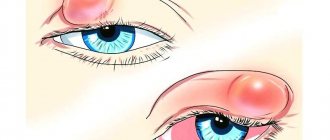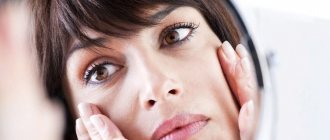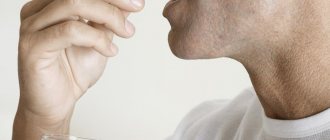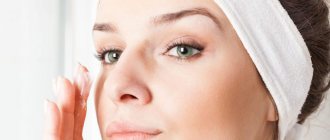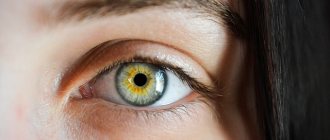An allergic reaction is a pronounced response of the body’s immune system to exposure to a protein substance (allergen). Every year there are more and more patients suffering from various forms of the disease. One of the most common reactions is an allergy to the eyes involving the skin around them2.
The problem significantly worsens a person’s life, so medicine is constantly improving treatment options. Now you can effectively cope with the reaction to the eyes and even prevent its occurrence1.
Causes of an allergic reaction
Allergies on the face around the eyes are directly related to the contact of irritants with the skin and (or) the mucous membrane of the eyeball. An excessive response of the immune system occurs not only when an allergen comes into contact with the skin, but also when the body is exposed systemically. Therefore, there are many reasons for the formation of allergy symptoms in the eye area.
Main factors causing the problem:
- Plant pollen during the flowering period (three periods are distinguished: flowering of trees, bushes and grasses, field grasses);
- Room dust containing fungi;
- Animal fur (allergens can be any pets or wild animals);
- Bird fluff;
- Contact lenses;
- Sunlight (the occurrence of a pseudo-allergic reaction);
- Medicines (local drops, ointments, creams or systemic drugs);
- Household chemicals (depending on the composition, there can be either a true or false allergy);
- Cosmetics (any cosmetics, except special hypoallergenic ones, can cause a response from the body).
Finding out the cause of the problem is a necessary step in successfully eliminating clinical manifestations. The task of a person who suffers from an allergy to the skin around the eyes is to understand the mechanism of its occurrence in order to remove it from his life. In some cases, this is enough for a full life.
Drug therapy
Currently, it is often practiced to treat various pathologies with homeopathic medicines. They are based only on natural ingredients, which allows you to use the products for long periods without harm to health. The following are considered the most effective:
| A drug | Description |
| Traumeel S | A unique product with anti-edematous, analgesic and anti-inflammatory effects. The drug stimulates the elimination of toxins from the body and helps eliminate allergic manifestations. Available in the form of tablets, gel and solution for intramuscular injection. Prescribed for redness caused by demodicosis, allergies, infectious pathologies |
| Echinacea compositum | A solution for intramuscular injection, which has a pronounced anti-inflammatory, regenerating and immunostimulating effect. Suitable for the treatment of redness caused by infectious diseases, burns from sun rays or exposure to a solarium, and pathologies of the digestive system |
| Belladonna granules | A unique product that allows you to quickly relieve inflammation and restore the skin. Suitable for the treatment of redness of the face and area around the eyes caused by ultraviolet radiation, pathologies of the digestive system, allergies, demodicosis and infectious diseases |
Such remedies are always prescribed in long courses (from 3 to 6 weeks) and help quickly eliminate the disease. They should only be prescribed by a doctor, taking into account the individual characteristics of the patient.
Despite the safety of the drugs, they are rarely prescribed for the treatment of children.
Allergy symptoms around the eyes
Recognizing an allergic reaction and distinguishing it from other diseases of the visual system is not very difficult. One of the main points is the sudden onset of symptoms and their connection with any irritant. It is not always immediately clear what exactly the allergen is, then you need to evaluate the symptoms.
The following signs indicate an allergic nature of the problem:
- Burning and stinging in the eyes;
- Drying of the mucous membrane;
- Swelling of the eyelids (swelling can be so severe that the eyelids cannot be opened);
- Severe itching (may be in the eyes, nose, ears at the same time);
- Lacrimation (profuse);
- Deterioration of vision (temporary, but can be permanent, depending on the type and duration of the disease);
- Photophobia;
- Redness of the skin around the affected area;
- The appearance of small pinpoint rashes (urticaria).
Clinical manifestations are usually symmetrical. The only exceptions are situations where the local remedy was used only on one eye.
Special exercises
There are several exercises that will help you cope with mild redness caused by demodicosis, sun rays, staying in a solarium, infectious pathologies, gastrointestinal diseases or allergies. The effect is achieved through the work of facial muscles and normalization of blood circulation. The following exercises will be the most effective:
- Strong squinting of the eyes followed by widening. Repeat five times.
- Frequent blinking for 10 seconds with a break of 5 seconds. Perform 10 approaches.
- Opening your mouth wide for two seconds followed by closing it for the same amount of time. Do five approaches.
- Curl your lips into a tube and pull them forward for 5 seconds. Perform three to five approaches.
Using exercises is useful for both adults and children.
Types of allergic reaction
Exposure to allergens can cause different types of body responses. Depending on the causes, mechanisms, and manifestations, allergies in the eye area are divided into:
- Vernal keratoconjunctivitis. A chronic seasonal disease that is typical for children and adolescents during the period of hormonal changes in the body.
- Hay fever. Seasonal response of the body to irritation by plant pollen. As a rule, it occurs annually during the flowering period of a certain plant. Any pollen can cause a problem, but most often it is ragweed and birch3.
- Chronic form. In the case of constant exposure to an allergen or a severe reaction, an immune response occurs that worries for weeks, then passes and occurs again.
- Acute reaction. Periodic allergies that occur specifically at the moment of exposure to an allergen. After it disappears, the reaction quickly passes and does not occur until contact occurs again.
Is it possible not to treat an allergic reaction?
Clinical manifestations in the eye area cause significant discomfort. The condition will worsen with continued contact with the allergen. But even stopping exposure to the irritant does not always provide full recovery.
An integrated approach to the treatment of an allergic reaction: avoiding allergens in combination with taking medications gives a chance for a full recovery and a return to a full life. In addition, timely use of medications that relieve the condition allows one to avoid serious complications when allergies turn from local to systemic3.
Symptoms requiring increased attention:
- Swelling of the entire face;
- Difficulty breathing;
- Swelling of the tongue;
- Increased breathing;
- Increased heart rate;
- Blue face;
- Reduced pressure.
Emergency care for suspected angioedema or anaphylactic shock should begin with calling an ambulance1. Eye allergies rarely lead to such complications. The key role here is played by the duration of exposure to the allergen and proper treatment.
Folk remedies
In the fight for beauty, all means are good. In addition, there are a number of products that can improve the condition of the skin that are always at hand. One way that always works is masks. They make them from literally everything.
1. Potatoes. For masks, it is rubbed on a fine grater and the resulting paste is applied to the eye area using cotton swabs for 2 or 3 minutes. The healing properties of potatoes have not yet been fully studied, but the fact that it has a beneficial effect on the skin is undeniable. 2. Dill seeds. For the mask, these seeds are poured into a small fabric bag and placed in fairly hot water. Take out the bag after a few minutes, squeeze it out and apply it to your eyes for 5 minutes. 3. Herbs. Decoctions of cornflower and string are considered especially effective.
Treatment of skin allergies around the eyes
The first priority action when signs of allergy occur is to stop contact with the allergen. If symptoms appear for no apparent reason, you should change your position, take a shower, and wash your face. This increases your likelihood of reducing your exposure to the allergen, even if you don't understand what caused the symptoms.
Additionally, antihistamines must be taken, preferably second generation4. These drugs include drugs based on cetirizine, for example, Cetrin. The work of drugs in this group is to block histamine receptors, thereby relieving the clinical manifestations of allergies. The drugs begin to act in 15-20 minutes, so they quickly improve a person’s condition4.
Additional general recommendations:
- Do not rub your eyes, this aggravates the clinical manifestations.
- Use corticosteroid ointments with caution (it is advisable to consult with specialists before using this).
- Choose your antihistamine carefully.
- During treatment, avoid cosmetics, creams and any chemical products for your facial skin.
- If you are allergic to animals or pollen, do wet cleaning more often, wash clothes after returning from the street or contact with an animal.
The rate of disappearance of symptoms is influenced by: the amount and duration of exposure to the allergen, the body’s reactivity, and the use of an antihistamine.
Prevention measures
Allergies to the skin under the eyes can only be prevented if you already know what exactly causes them. In such a situation, you can take an antihistamine in advance so that the symptoms are weaker or do not appear at all4.
To enjoy a full life, it is not recommended to ignore the presence of allergies. Timely administration of the drug will help to cope with the problem.
Bibliography:
- Egorov A.E. Treatment of allergic diseases of the anterior segment of the eye / A.E. Egorov // Russian Medical Journal. – 2000. – T. 1. – Issue. 2. – pp. 52–55.
- Kurbacheva O. M. Pollinosis. Modern aspects of diagnosis and treatment of allergic diseases. Mater. conf. - M. - 2009. - P. 31 – 37.
- Maichuk Yu. F. Seasonal hay fever is the most common form of ocular allergosis. Part I. Epidemiology, etiology, pathophysiology, clinical picture, diagnosis. Ross. ophthalmol. magazine. — 2010. — No. 1. — P. 37 – 41.
- Tataurshchikova N.S. Modern aspects of the use of antihistamines in the practice of a general practitioner. // Pharmateka. 2011. No. 11. pp. 46–50.
Our advantages
"Moscow Eye Clinic" offers comprehensive diagnostics and effective treatment of eye diseases. The use of the most modern equipment and the high professional level of specialists working in the clinic eliminate the possibility of diagnostic errors.
Based on the results of the examination, each visitor will be given recommendations on choosing the most effective methods of treating the eye pathologies identified in them. By contacting the Moscow Eye Clinic, you can be sure of quick and accurate diagnosis and effective treatment.
All questions you are interested in can be asked to specialists by calling 8 (800) 777-38-81 and 8 (499) 322-36-36 or online using the appropriate form on the website.
Mironova Irina Sergeevna


